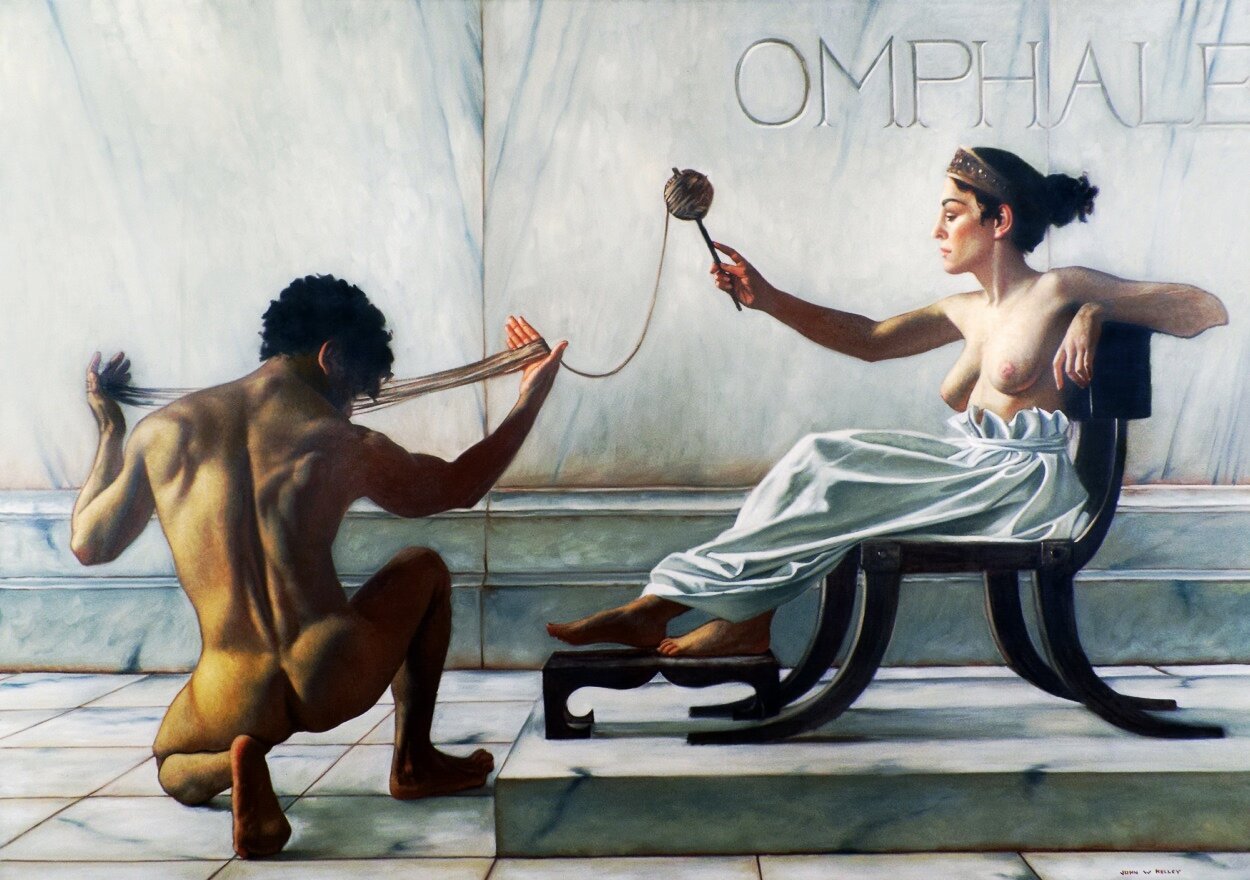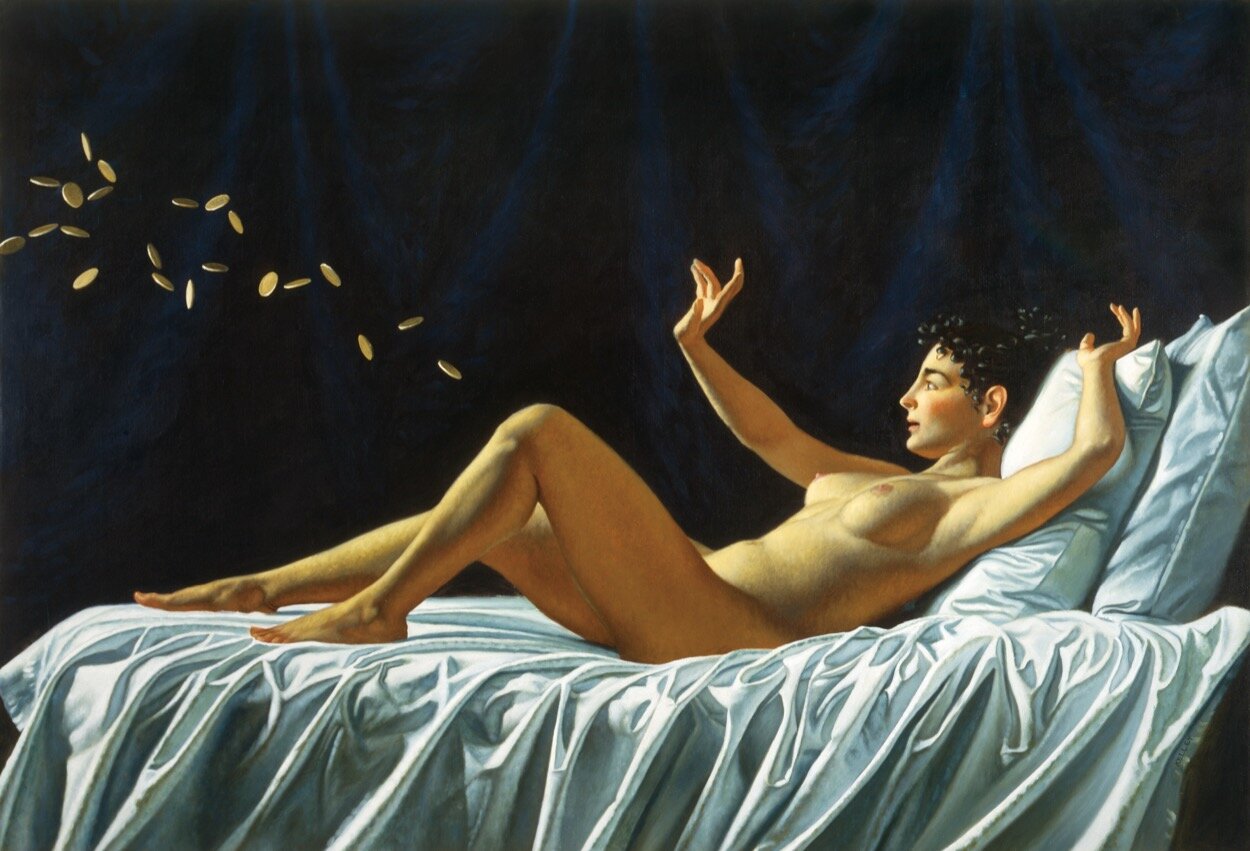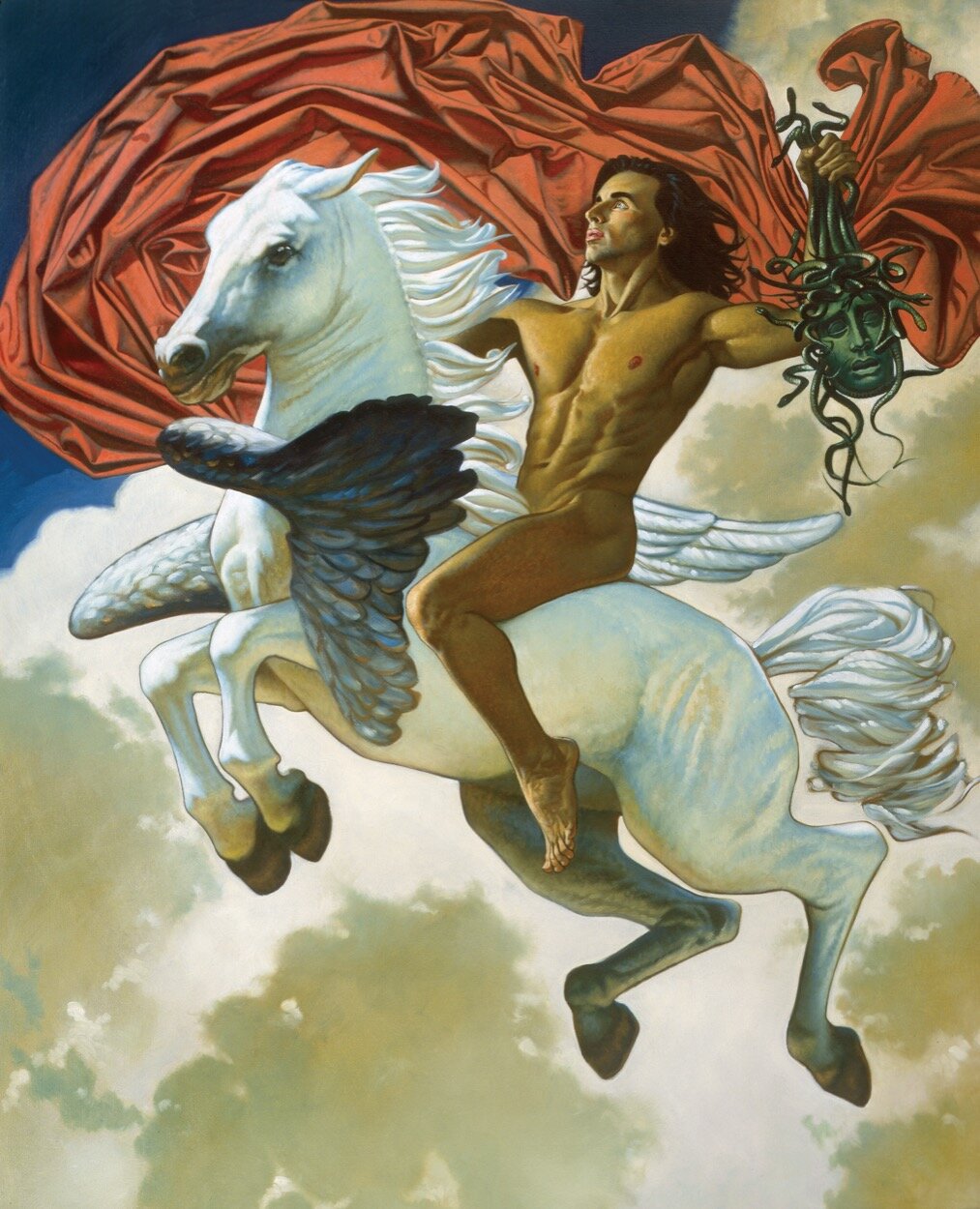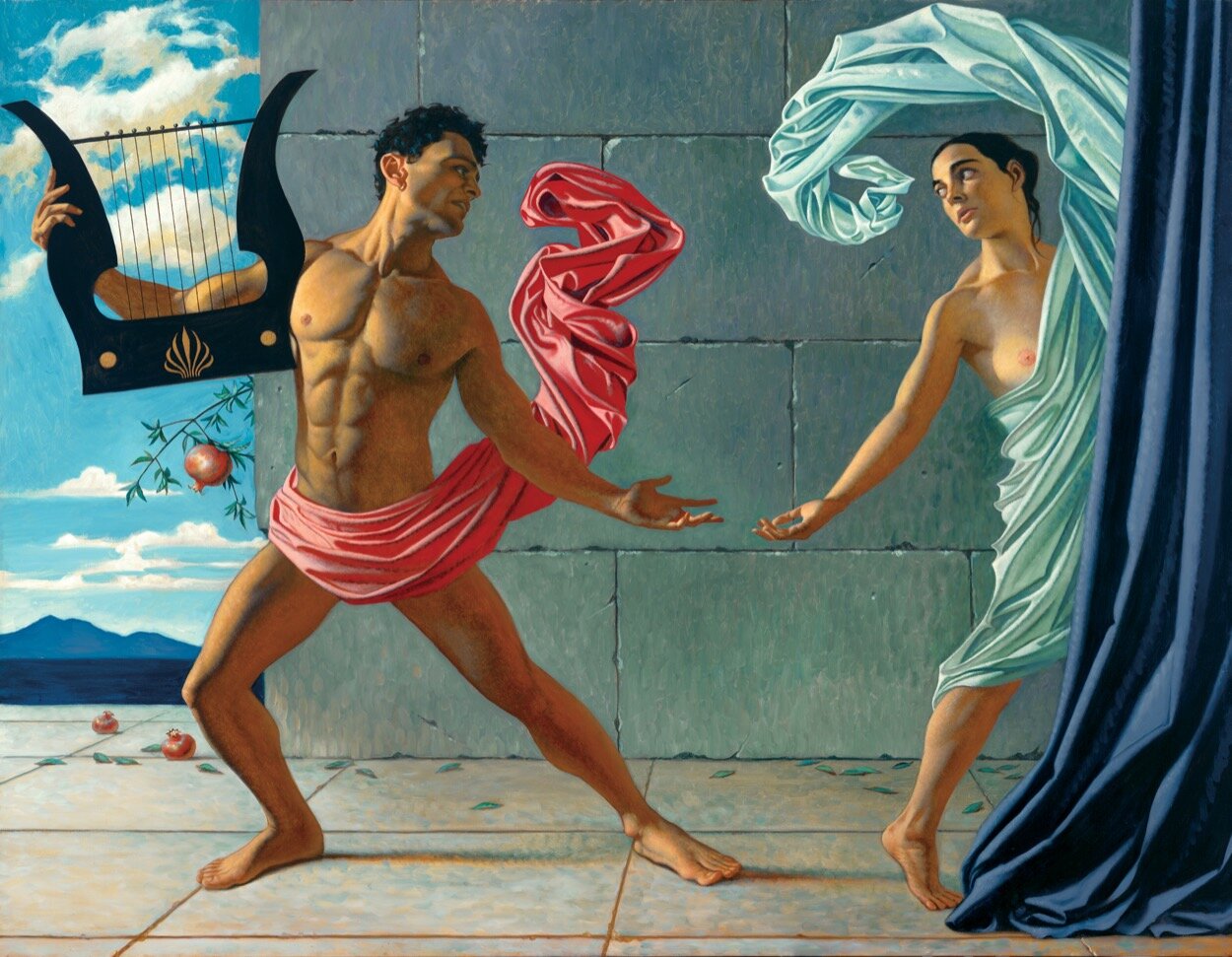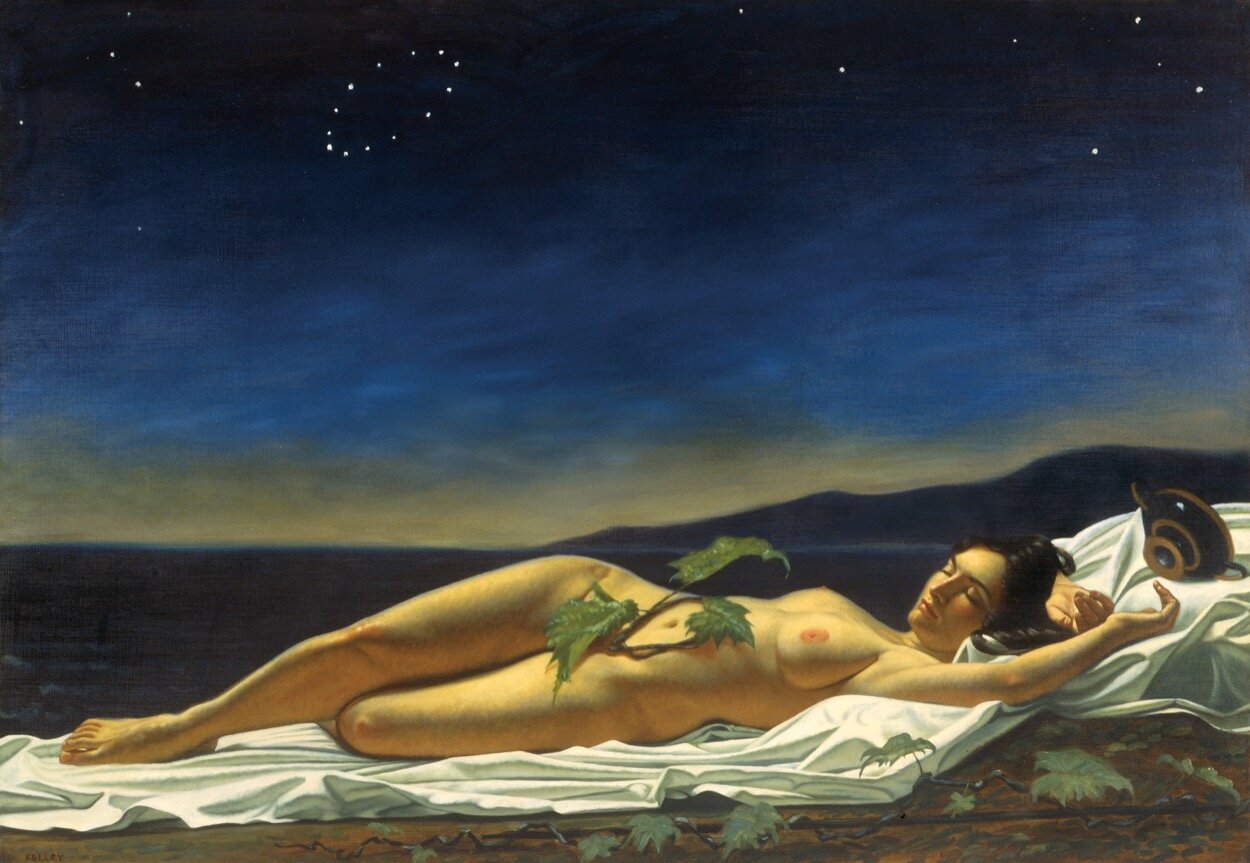
But for my words, like whirring javelins sped on their course, let not my eager strength launch such a shower of darts wide of their mark. For I come with intent to honor The Muses on their glorious thrones.
Pindar, "Ode to Xenophon" 464 B.C.E.
Mythical Life: The Paintings of John Woodrow Kelley
Long ago, the Greek poet Pindar aimed to honor the Muses with the gift of lyrics. In spite of his concerns regarding their pointed clarity and overzealous delivery, his words apparently never missed the mark, for these reverent incantations have withstood the test of time. Almost 2,500 years after Pindar's Odes, the painter John Woodrow Kelley, working in a more secular milieu, similarly honors the Muses with meticulous compositions that convey a sense of timelessness and fidelity. Using an ultra-refined technique that echoes that of the Neoclassical masters like David and Ingres, Kelley evokes in each work the exalted human values associated with ancient myths and specifically Greco-Roman ideals.
David Ebony
Contributing editor, Art in America magazine
(“Greek Mythology Now,” excerpt from Introduction, page 6)
A Selection of Paintings from the Monograph: Greek Mythology Now
Ganymede
Hercules and Queen Omphale
Hippolytus and Phaedra
Icarus
Jupiter and Danae
Mercury and Venus
Narcissus
Temptation of Hercules
Oedipus and The Sphinx
Venus
Perseus on Pegasus
Orpheus
Orpheus and Eurydice
New Prints
John Woodrow Kelley Drawings & Paintings



